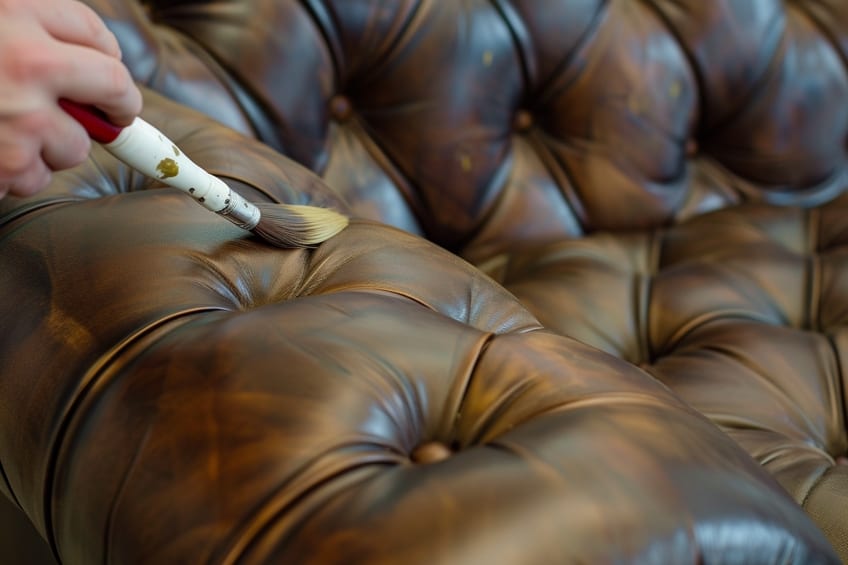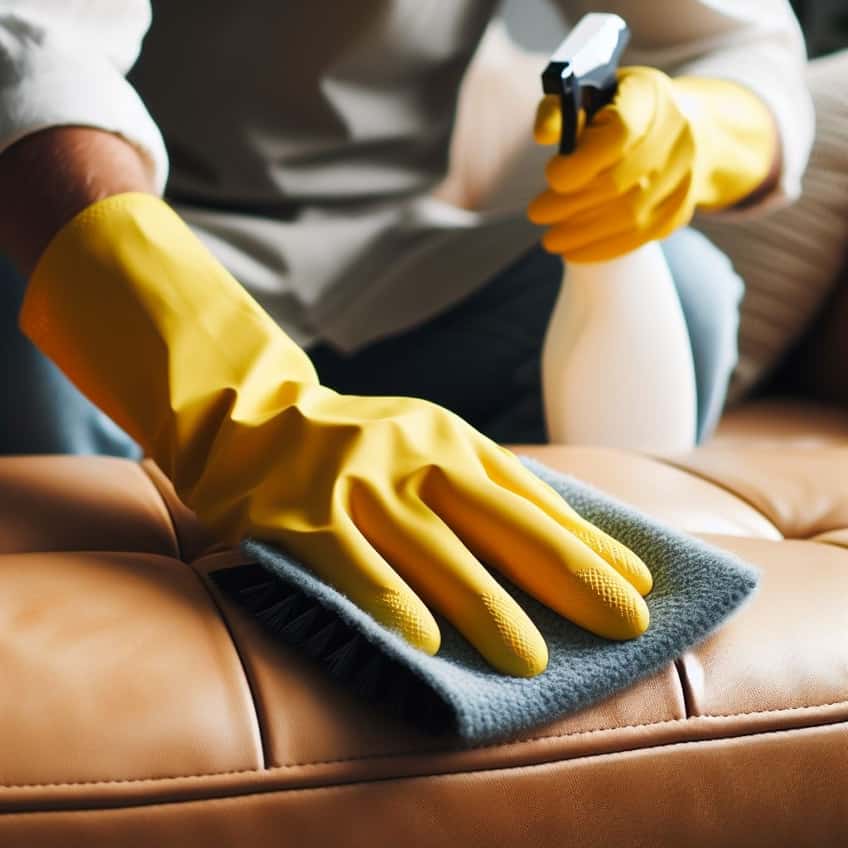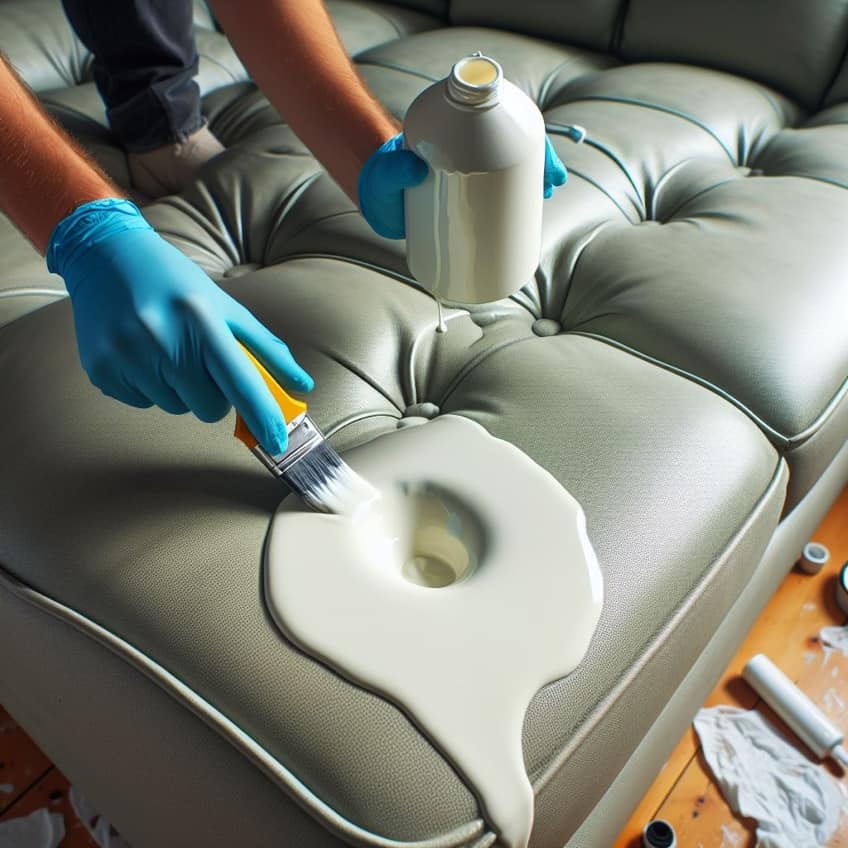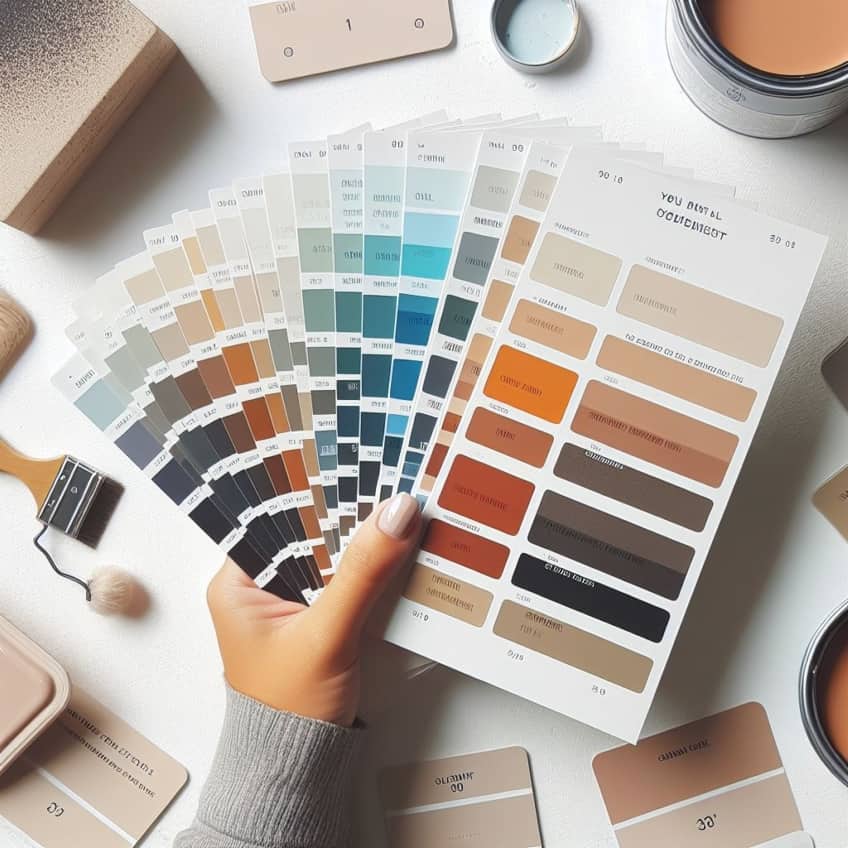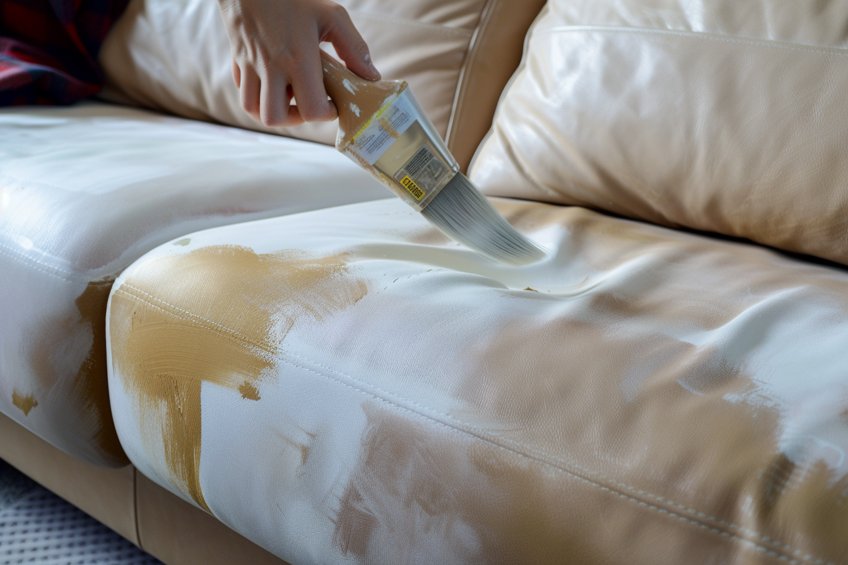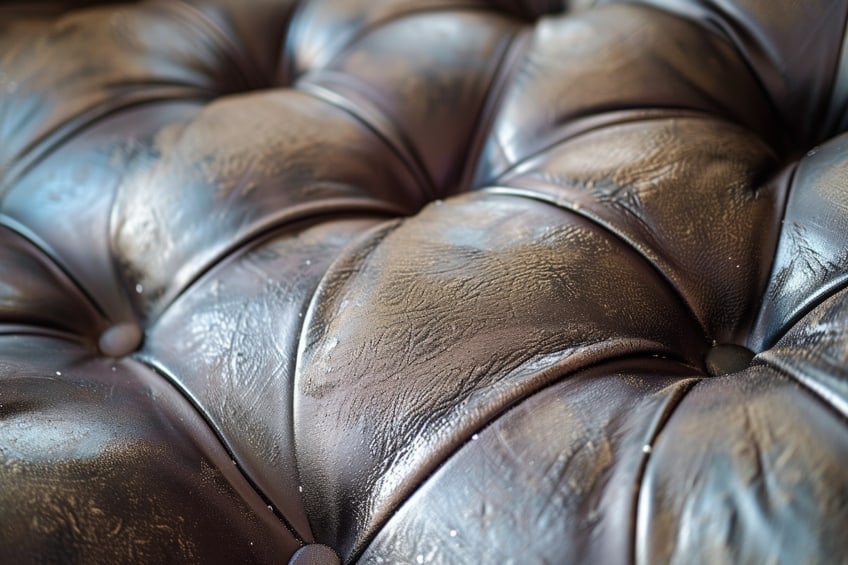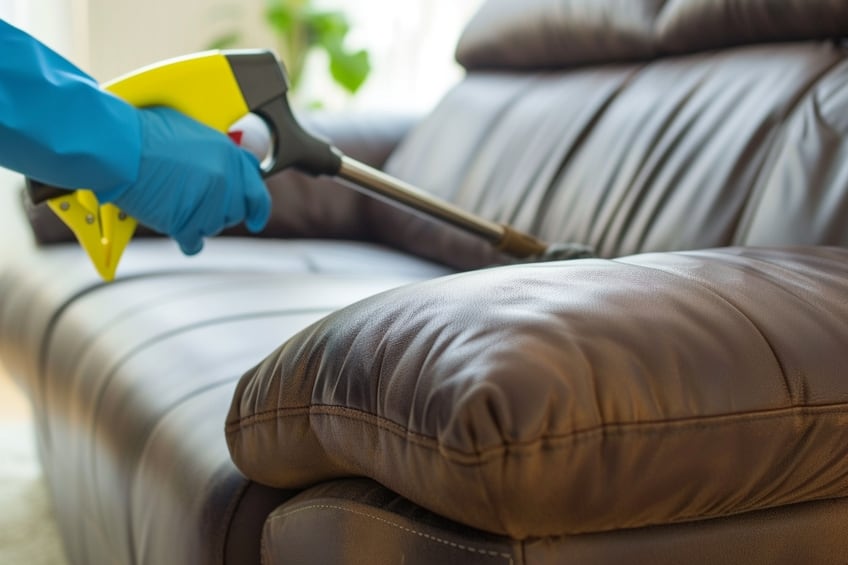How to Paint Faux Leather – A Step-by-Step Guide
This post may contain affiliate links. We may earn a small commission from purchases made through them, at no additional cost to you. You help to support resin-expert.com
Faux leather presents a cost-effective substitute for real leather, although its texture may sometimes lack the richness found in genuine leather. Painting faux leather provides a transformative solution, infusing furniture and accessories with luxury. In this guide, we’ll explore the step-by-step process to achieve professional-looking results and breathe new life into your space!
Table of Contents
Key Takeaways
- Acrylic paint is suitable for faux leather, adhering well and offering lasting color.
- Proper technique and sequence in applying paint are crucial for a smooth finish.
- Final sealing ensures durability and a polished appearance for painted faux leather items.
Preparing the Faux Leather
Before painting, ensuring a clean and primed surface is crucial for the paint to adhere correctly and for achieving a smooth, durable finish. This preparation involves thorough cleaning and priming of the faux leather.
Cleaning the Surface
To clean faux leather effectively, use a mild soap and water solution to gently wipe away dirt and grime. It is advisable to steer clear of harsh chemicals and abrasive cleaners, as they have the potential to harm the faux leather’s surface gradually.
Follow the below steps for the best results.
- Remove any debris or dust from the surface with a gentle brush or cloth.
- To clean the surface effectively, utilize a blend of warm water and gentle soap, or opt for a specialized cleaner formulated for faux leather.
- To tackle stubborn stains or residue, softly wipe the affected area with a cloth moistened with rubbing alcohol.
- After cleaning, wipe the surface down with a wet cloth to remove any soap residue, followed by a dry cloth to ensure the faux leather is completely dry.
Applying Primer for Better Adhesion
Applying primer before painting faux leather ensures better adhesion and enhances the longevity of your finish. It creates a smooth, uniform surface, allowing the paint to adhere evenly and providing a solid foundation for your desired color scheme. For optimal paint adhesion, follow the below steps.
- Lightly sand the surface with fine-grit sandpaper to create a key for the primer to grip.
- Remove any sanding dust with a clean cloth.
- Apply a deglazer or a primer designed for faux leather; this will remove any finish that could prevent the paint from adhering.
- Allow the primer to dry completely before applying paint. This will create a better bond between the faux leather and the paint, leading to a more durable finish.
Choosing the Right Paint
Selecting the appropriate paint for faux leather is crucial to ensure durability and aesthetic appeal. It helps to understand the types of paints available and the variety of colors to make an informed choice for your project.
Types of Paint Suitable for Faux Leather
- Acrylic-based paint: Acrylic paint is highly favored for its flexibility and adherence to faux leather. It’s known for not fading quickly and is available in a vast array of colors including metallic and glittery shades. This paint works well to maintain the faux leather’s pliability.
- Leather paint: Specifically designed for leather and faux leather, leather paint offers a formulated solution that absorbs into the surface, which helps to prevent cracking or peeling.
- Chalk paint: For a distressed look, chalk paint can be applied to faux leather. It usually provides a matte finish but should be sealed properly after application for longevity.
Color Selection
When selecting a color for faux leather, you need to consider a few aspects. Acrylic paint colors offer various finishes to suit your preferences. A glossy finish provides a shiny appearance to the surface, while a matte finish offers a non-reflective, flat look, allowing you to choose the style that best complements your decor and personal aesthetic.
Choosing the right finish (gloss or matte) will affect the overall appearance of the faux leather item. A glossy finish can mimic the look of new leather, while a matte finish may contribute to a more vintage or rustic style. Always test your color choice on a small, inconspicuous area to ensure the final outcome meets your expectations.
Painting Techniques
When painting faux leather, precision, patience, and the correct tools are crucial. Applying the right technique ensures a professional and lasting finish.
Applying Thin and Even Coats
One should begin with thin layers of acrylic paint, ensuring each coat is even and smooth. A wide, flat paintbrush or sponge works well to cover large areas without leaving brush marks. For the best results, one allows the paint to dry completely between coats. This method prevents cracking and peeling, as thick layers may not adhere properly to faux leather.
- Tools: Flat paintbrush, sponge
- Method: Thin and even application
- Drying Time: Essential between coats
Painting a Design
When adding a design, a smaller paintbrush provides the control needed for detailed work. One opts for high-quality paint that won’t fade easily. It’s important to sketch the design lightly onto the faux leather before painting to ensure precision.
Designs can range from simple shapes to intricate patterns, depending on the desired look.
- Tools: Small paintbrush
- Method: Sketch then paint
- Design Complexity: Varies (simple to intricate)
Working With Textures and Creases
To paint over textured faux leather or into its seams and crevices, a stippling technique with a sponge or stiff-bristle brush can be effective. This technique involves dabbing paint onto the surface to reach uneven areas without accumulating excess paint. With faux leather, working paint into these textures can create an authentic leather-like appearance.
- Tools: Stiff-bristle brush, sponge
- Method: Stippling (dabbing)
- Target Areas: Textures, seams, crevices
In summary, a careful selection of tools and techniques tailored to the specific characteristics of faux leather is imperative for achieving an attractive and durable finish.
Finishing Touches
Once the painting is complete, proper drying and sealant application are crucial to ensure the durability of the faux leather item. These steps help protect the painted surface against wear and tear.
Drying and Applying Sealant
After painting, the faux leather should be allowed to air dry completely. This may take several hours to overnight, depending on the thickness of the paint and the environmental conditions. It is important that the item is not disturbed during the drying process to prevent smudging or chipping. Once the paint on the faux leather surface has dried, it’s essential to apply a clear acrylic finisher to seal it effectively.
This sealant creates a protective layer that enhances the durability of the paint and guards against moisture damage.
To apply the sealant, ensure the painted surface is thoroughly dry, then use a clean brush or sponge to apply the finisher in even strokes. Allow the sealant to dry according to the manufacturer’s instructions, ensuring a long-lasting and resilient finish for your faux leather project. During this phase, do not use any heat source to speed up the drying process, as this could cause the material to warp or the paint to bubble.
Maintenance Tips
Maintaining the painted faux leather item involves regular care:
- Avoid excessive exposure to direct sunlight to minimize fading.
- Clean gently with a damp cloth when necessary, avoiding harsh chemicals.
- For ongoing care, reapply a sealant every few months or as needed to maintain its durability.
Frequently used items may require more diligent care to remain vibrant and intact. Always refer to the manufacturer’s guidelines for specific recommendations on care and maintenance.
By following the steps outlined in this guide, you’ve learned how to breathe new life into your decor with painted faux leather. Whether you’re reviving old furniture or adding luxury to new pieces, the possibilities for creativity are endless. Remember to prep your surface, choose quality paints, and embrace patience for the best results. With each stroke of the brush, you’re not just painting faux leather – you’re crafting stories and adding character to your living spaces. Enjoy the satisfaction of transforming ordinary items into extraordinary works of art!
Frequently Asked Questions
What Type of Paint Adheres Best to Faux Leather Materials?
Acrylic paint is highly recommended for painting faux leather due to its excellent adherence to the material. It is versatile, coming in a variety of colors, including metallic and glitter shades, and has a resilient finish that resists fading.
How Can I Refresh the Look of My Faux Leather Shoes With Paint?
To refresh faux leather shoes with paint, one should thoroughly clean the surface and apply a quality acrylic leather paint using a sponge or brush. For the best results, a finisher can be applied after painting to seal the color and provide additional protection against wear and tear.


